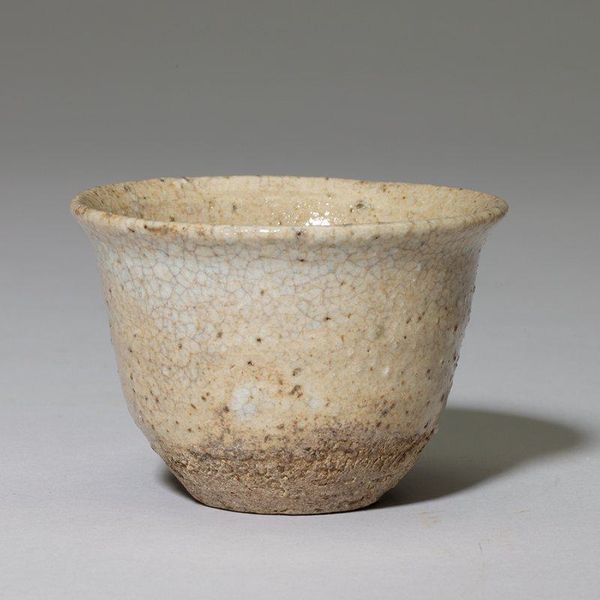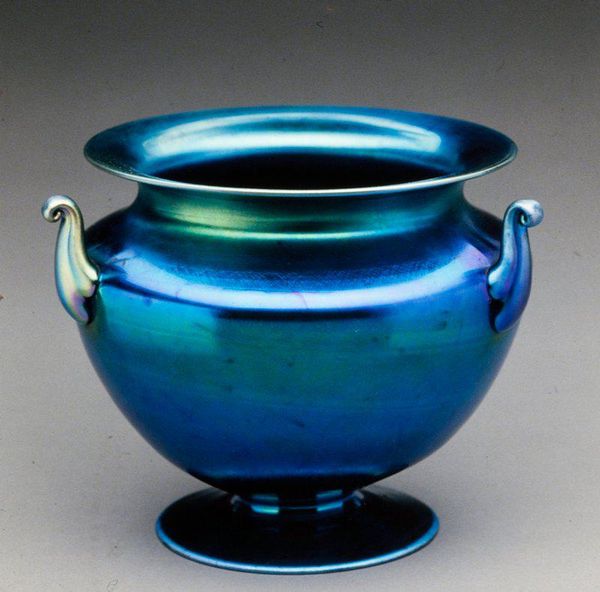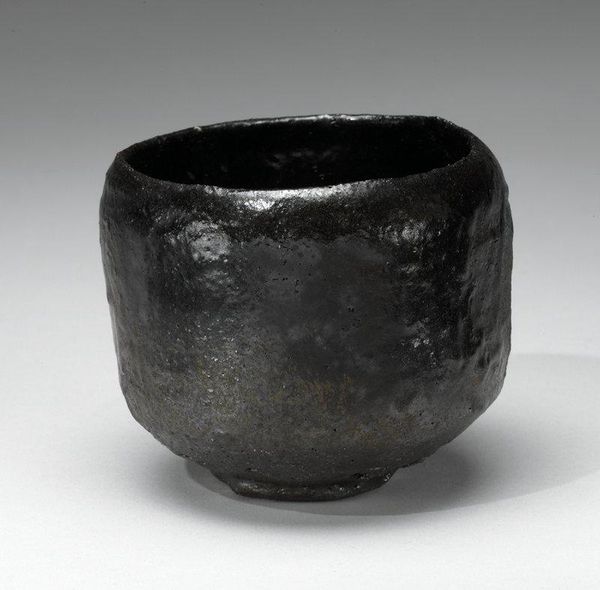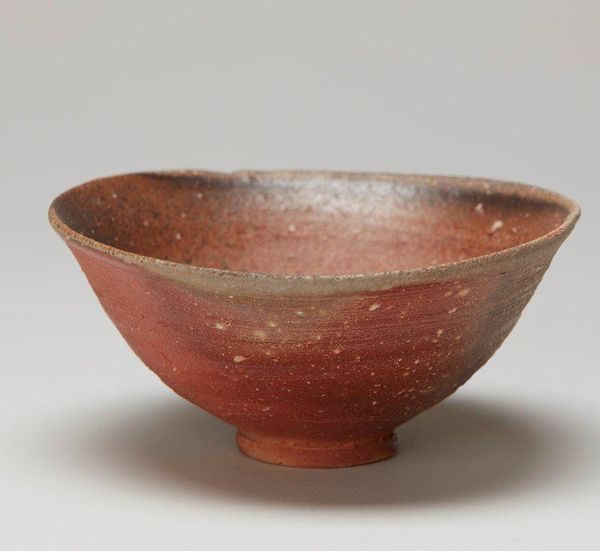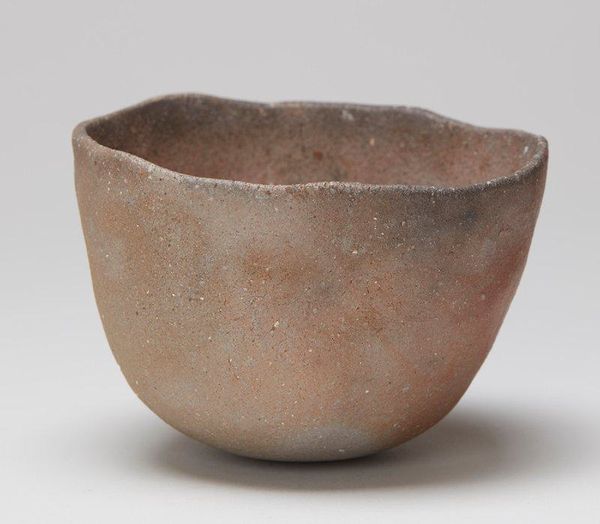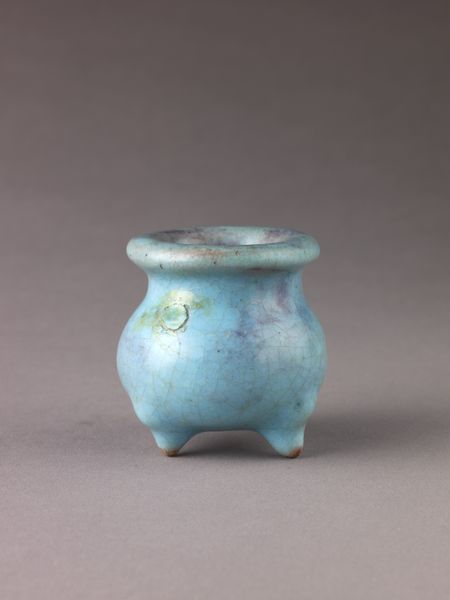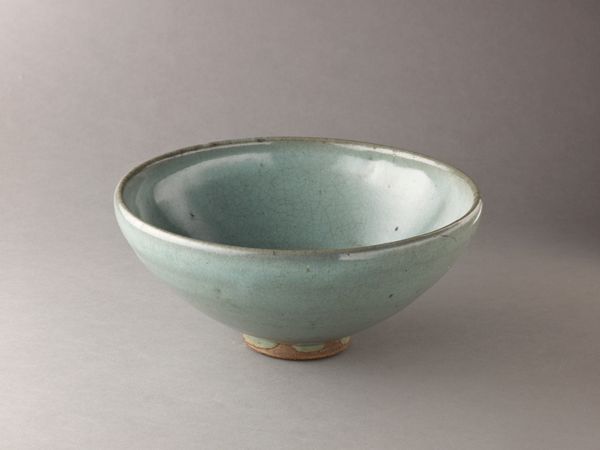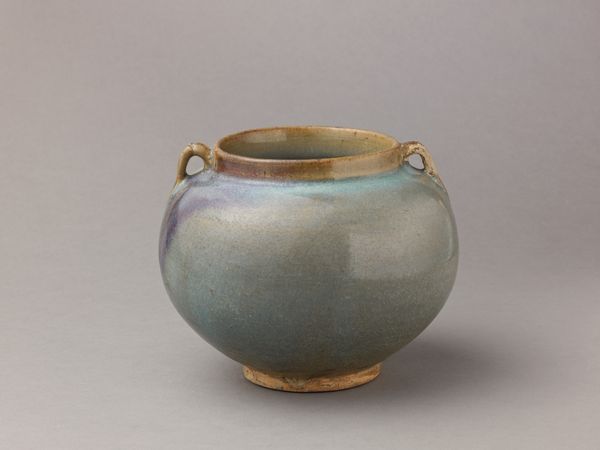
ceramic, sculpture
#
organic
#
art-nouveau
#
ceramic
#
sculpture
#
united-states
Dimensions: 3 5/8 x 6 3/8 x 6 3/8 in. (9.21 x 16.19 x 16.19 cm)
Copyright: No Known Copyright
Editor: Here we have a ceramic "Bowl" by George E. Ohr, dating from around 1910. I’m struck by how tactile it appears, the glaze has such depth, and the rim looks so deliberately deformed. What do you make of it? Curator: Well, considering this object strictly as a formal exercise, notice how Ohr manipulates the expected symmetry of a bowl. The irregular rim creates a dynamic interplay between positive and negative space, disrupting any sense of classical order. Editor: It feels very intentional, that warping. Almost like he’s challenging our idea of what a bowl *should* be. Curator: Precisely! The lustrous glaze, swirling with hints of iridescent color, further obscures the pure form, drawing attention to the materiality of the clay itself. Is it functional, or purely sculptural? Ohr seems to delight in straddling those lines. Editor: It definitely invites you to question the artist's intentions, but do you think he aimed for a kind of art nouveau aesthetic? Curator: Art Nouveau often incorporates fluid lines and organic forms, elements certainly present here. However, Ohr's distortions, those almost violent manipulations, push beyond the simply decorative, suggesting a more rebellious spirit. The textural contrasts he achieves are very appealing. Editor: That's an interesting way to see it. Looking closely, the rough, uneven surface almost seems to defy the smooth, controlled lines typically associated with the style. I now appreciate the bowl's dynamism. Curator: I find a renewed appreciation for the piece as well when thinking about his purposeful approach. Thank you.
Comments
No comments
Be the first to comment and join the conversation on the ultimate creative platform.

